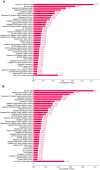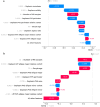Segmentation of mature human oocytes provides interpretable and improved blastocyst outcome predictions by a machine learning model
- PMID: 38719918
- PMCID: PMC11078996
- DOI: 10.1038/s41598-024-60901-1
Segmentation of mature human oocytes provides interpretable and improved blastocyst outcome predictions by a machine learning model
Abstract
Within the medical field of human assisted reproductive technology, a method for interpretable, non-invasive, and objective oocyte evaluation is lacking. To address this clinical gap, a workflow utilizing machine learning techniques has been developed involving automatic multi-class segmentation of two-dimensional images, morphometric analysis, and prediction of developmental outcomes of mature denuded oocytes based on feature extraction and clinical variables. Two separate models have been developed for this purpose-a model to perform multiclass segmentation, and a classifier model to classify oocytes as likely or unlikely to develop into a blastocyst (Day 5-7 embryo). The segmentation model is highly accurate at segmenting the oocyte, ensuring high-quality segmented images (masks) are utilized as inputs for the classifier model (mask model). The mask model displayed an area under the curve (AUC) of 0.63, a sensitivity of 0.51, and a specificity of 0.66 on the test set. The AUC underwent a reduction to 0.57 when features extracted from the ooplasm were removed, suggesting the ooplasm holds the information most pertinent to oocyte developmental competence. The mask model was further compared to a deep learning model, which also utilized the segmented images as inputs. The performance of both models combined in an ensemble model was evaluated, showing an improvement (AUC 0.67) compared to either model alone. The results of this study indicate that direct assessments of the oocyte are warranted, providing the first objective insights into key features for developmental competence, a step above the current standard of care-solely utilizing oocyte age as a proxy for quality.
© 2024. The Author(s).
Conflict of interest statement
All authors are employees of Future Fertility, the company that developed and holds a patent for the AI model described, and own stock options. D.N. and A.K. are co-founders of the company and own shares.
Figures






References
-
- Thoma M, Fledderjohann J, Cox C, Kantum Adageba R. Oxford Research Encyclopedia of Global Public Health. Oxford University Press; 2021. Biological and social aspects of human infertility: A global perspective.
Publication types
MeSH terms
LinkOut - more resources
Full Text Sources
Miscellaneous

